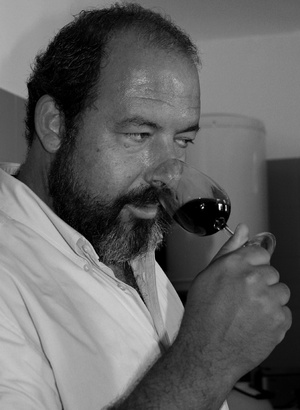Van Zeller is a mighty name within the annals of Port Wine history: its ancient ancestral roots penetrate deep into a pre-Napoleonic landscape and parallel the evolution of the modern Douro valley. Today Cristiano Van Zeller takes part to our “summer series” on www.vitabella.fr where great names give every day their opinion on a familiar topic that comes to mind before every new harvest: To de-stem or not to de-stem?
What is your position at your wine estate: To de-stem or not to de-stem?
Cristiano Van Zeller: “I would like to separate our answer in the three styles of wines we produce: DOC Douro Red, DOC Douro White and Port. Regarding DOC Douro White: After many experiences of many years, we came to the conclusion that de-stemming is crucial for the quality of our white wines and the style we want and like to produce. For DOC Douro Red: At present and also after many years of experiences, in view of the complexity and diversity of grape varieties we use in our red wines (41), we prefer do de-stem all our red wines.For Port: Here centuries old experience have definitively established full stemmed (whole bunch) fermentations as the best way to achieve the top quality in our Ports..”
In your own experience, what are the positive and negative aspects of including the stems?
Cristiano Van Zeller: “For DOC Douro White, stems contribute to too much astringency and vegetable tastes and aromas to the wines. It would become impossible to drink. As we use mostly a blend of many varieties, the maturity of the stems is very different at any given moment and it would be too risky to use them. For DOC Douro Red, as we use blends of many different varieties, mostly blended in the vineyards themselves (field blend) the maturity of the stems is very different at any given moment and it would be too risky to generalize their use. However, it would be (and is) possible to make a selection of the ripest stems and use them in the fermentations. At this point and after many years of experience, we have come to the conclusion that, in our red wines, stems would not contribute to the style and quality we want to achieve. Our grape varieties have enough (if not too many sometimes) tannins not needing any additional ones from stems. For Port as most of (if not all) grapes for Port are picked a bit overripe, stems are normally also perfectly ripe. Port ferments for a very small amount of time (up to 5º, 6º of natural alcohol) and, therefore, ripe stems contribute with good tannins to the final wine as during the fermentation we are never able to extract as many as the grapes would be able to “give out” in a normal full fermentation.”
USA, Australia, France … Throughout the world, more and more wine estates are testing the work with whole bunches (or, in any case, include a certain percentage of stems): Do you think this can be one of the next trends in the world of wine?
Cristiano Van Zeller: “In the past all wines we surely made that way as there was no real proper equipment and wine scientific knowledge to make a distinction. The “whole bunch” approach would not be a “new trend” but rather a return to old “wisdom”? In reality the “whole bunch” approach really depends on what each and every producer wants and likes to make of their wines. To make it a trend (generalized practice because of fashion?) would be a mistake… ”
(Write to VitaBella info@vitabella.fr)



